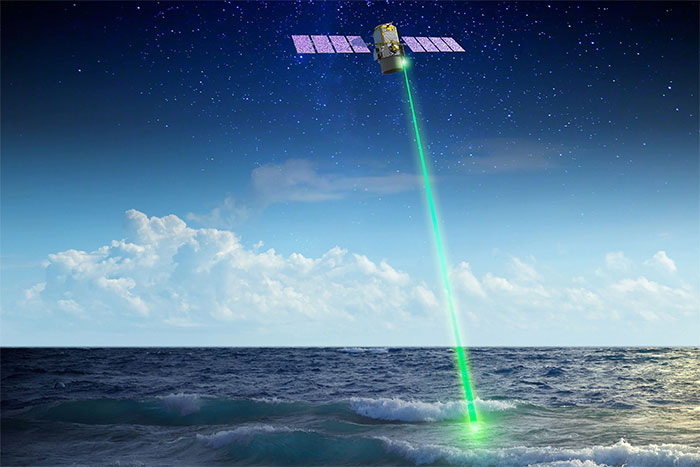US and France cooperate to track marine life from space
According to New Atlas, NASA engineers in collaboration with French researchers at Center National d'Etudes Spatiales (CNES) started using space laser devices installed on CALIPSO and Cloud-Aerosol Lidar satellites. to track small marine creatures - krill, baby squid and small fish.

Researchers in the US and France used CALIPSO lidar in space to track the largest migration of organisms on the planet - (Photo: NASA).
Technology that allows studying the impact of climate change on the migration of these microorganisms can also be useful for the army and fishermen. Twice a day, when the sun rises and sets, the movement of the animal kingdom takes place at sea, known as diel vertical migration (DVM) . This process is the largest of the known number and biomass migrations.
Representatives of many different species participate in the upright migrations of the day, including molluscs, juvenile squid and larvae - almost all organisms involved in the process are microscopic. During the nocturnal migration, organisms emerge on the surface and feed on small plants - phytoplankton. During the day, they sink to the depths to protect against predators.
Studying the migration of these so-called plankton microorganisms may be useful for military and fishing purposes (it is easier to hide a submarine in a cloud of zooplankton and there is always available at the side), as well as monitoring climate change.
The researchers plan to use space lasers to study surface water layers that are more than 20 meters thick. This is enough to detect plankton at night and in the morning, as well as study their behavior on a global scale.
- Plan to set up an Antarctic marine sanctuary
- Help children fulfill their dreams of being marine biologists
- The US refused to cooperate with the Moon exploration with Russia
- Japanese parks are outraged by using 5000 live fish for unbelievable reasons
- China and Europe cooperate to build a village on the Moon
- Ocean acidification threatens all marine life
- Track polar bears from space
- Plastic waste - The potential danger to the ocean
- Crustaceans start eating synthetic resin
- Thai floods threaten marine life
- France invested over 2 billion euros in space research in 2014
- Many marine species are unknown
 The US company is about to build a supersonic passenger plane of 6,000km / h
The US company is about to build a supersonic passenger plane of 6,000km / h Japan develops avatar robot as in fiction film
Japan develops avatar robot as in fiction film Australia tested the world's first mango picking robot
Australia tested the world's first mango picking robot America develops technology to separate water from animal waste
America develops technology to separate water from animal waste